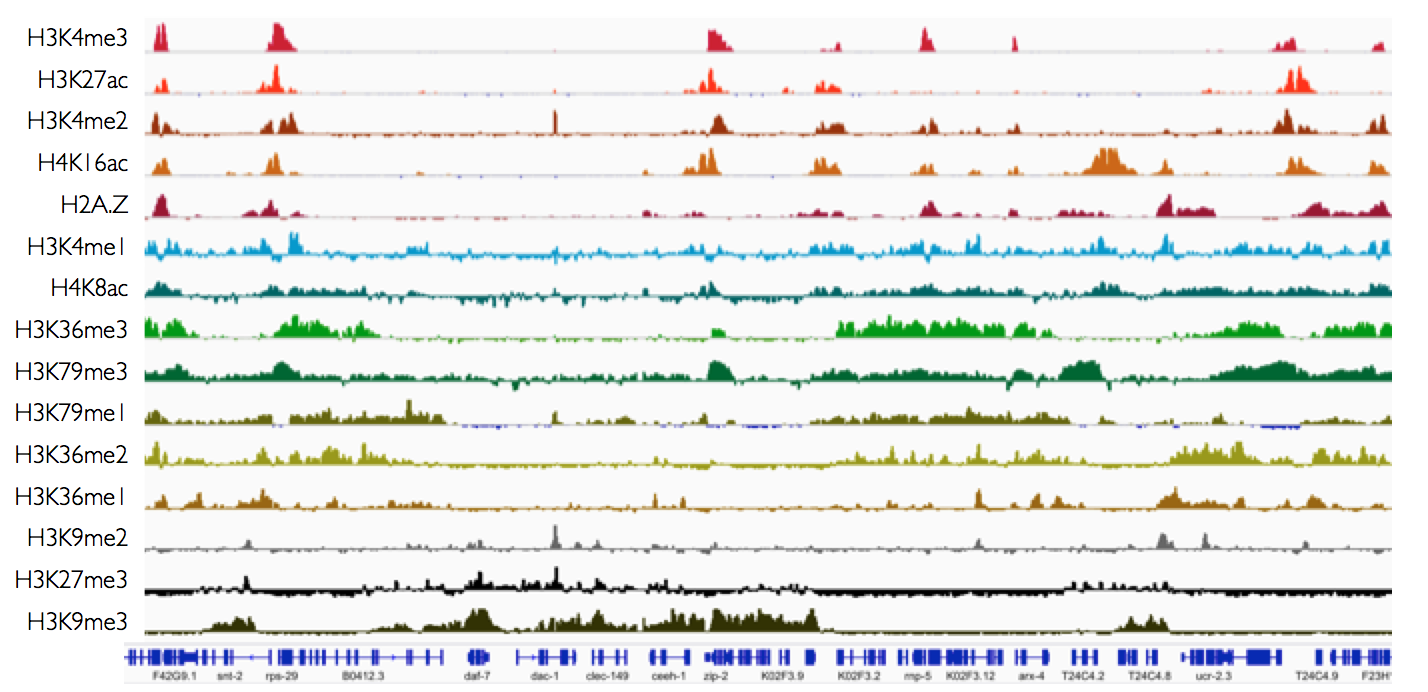A large number of post-translational modifications (PTMs) of histones occur in chromatin and individual modifications are highly associated with different activity states and gene features. However, the functional relevance of most modifications in animals is incomplete or unknown and the enzymes directing particular modifications have not been comprehensively identified. We are studying mutants lacking particular histone modifications to determine their functional relevance.
Large regions of chromatin in animal cells form heterochromatin, which is repressive for transcription and is involved in the silencing of repetitive sequences such as transposons. Silencing is important to maintain genome stability and heterochromatin itself is important for 3D genome organization. How heterochromatin is formed and the mechanism of silencing is not well understood. We are investigating the function of heterochromatin associated proteins and histone modifications using high-throughput and directed approaches.
